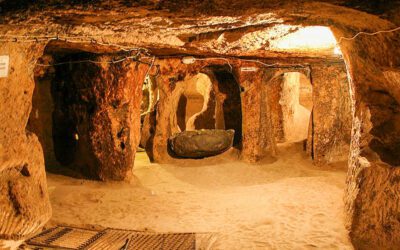Dr. Robert Duncan-Enzmann – 1980s
The manned interstellar spaceship, which is built and staffed with the objective of colonization, is thought by the writer to represent the ultimate creation of which Homo Sapiens will be capable. The writer considers manned interstellar spaceships to be the ultimate creation of mankind. They are not thought of as mere extensions of the technological explosion in which we live but an ultimate end and an ultimate goal.
This is because they will place fractions of mankind in contact with new environments. These new environments are so remote and isolated from the rapidly merging populations that they will force mankind to diverge genetically. With genetic divergence, mankind will become something else; this is a break and the basis for classifying the interstellar vehicle as an ultimate in the history of homo sapiens. Genetic drifts tend to be relatively fast in small, isolated groups. The results can be deadly or destabilizing at a low, medium, or high level of civilization (according to our current views) or flower into a super-civilization.
There are many Space Systems:
1) Balloons and Rockoons (rockets launched from high-altitude balloons).
2) Vertical probes fired by rockets or fired by artillery (rail guns).
3) Ballistic probes fired by rockets or fired by artillery.
4) Orbital probes fired by rockets or fired by artillery.
5) Earth orbital systems (manned and unmanned). Rise and decay systems, systems that can be oriented, maneuverable systems, returnable systems.
6) Systems for Solar interplanetary space (unmanned and manned). Rise and decay systems, systems that can be oriented, maneuverable systems, returnable systems.
7) Interplanetary systems. Impact probes, flyby probes, probes for orbital capture of the target body, soft landing probes, soft landing rover probes.
8) Complex systems. Satellite interception, anti-missile-missiles, manned orbital rendezvous, joint orbital surface operations (man-ned\unmanned systems), precursor logistics vehicles, base build-ups
Local systems must be considered as limited in time, space, or geometrically, by composition, or thermodynamically, which is to say, only specific configurations of energy can be associated with the object. The value taken from the anthropomorphic point of view must eventually serve the ends of man. The value taken from a non-anthropomorphic point of view may be measured as the net movement of matter and energy flux as a function of time.
One of the Engineering Communities’ fondest projects was the nuclear-propelled airplane. It was to be developed into an aerospace vehicle capable of taking off from any major airport. Then, with a dual jet-ramjet, rise to extreme altitudes from which it would be boosted into orbit with minor rocket boosters. I had the privilege of sitting upon an ANP (aircraft nuclear propulsion engine) in flight and at full power levels in 1959. The engine was not driving the aircraft; it was carried aloft and brought to full power. Orion-B designers felt that ANP was necessary for a massive, manned space effort. It seemed likely that with it, the cost of delivering payloads into orbit would drop to less than a dollar per pound. This type of vehicle seemed then and still seems to the writer to portend development into sub-orbital ballistic trajectories for passenger services between continents and even across continents.
All research projects associated with ANP were canceled in 1960, with the laboratories being dismantled. Likewise, all projects associated with the construction of an engineering test aircraft were canceled, and the equipment was dismantled and scrapped. All discussion concerning such aircraft has been banished from the media for at least 20 years. Yet, this writer feels the development of such aircraft is inevitable. In 1960, ANP engines would not have been commercially viable because commercial aircraft the size of a Boing 747 did not exist. Indeed, the academic and scientific communities heaped derision on the very notion that great aircraft would ever make commercial sense. Howard Hughes Spruce Goose, the earlier Dornier Do X, and similar examples were given.
The Boeing 747 has changed the whole pattern of transportation between continents. I did not realize this until I made a recent trip to the southern hemisphere. The changes were startling. Vacationers by the thousands travel between Argentine, South Africa, and Australia. The flights take a night. The ocean liners of the Union Castle and other lines have disappeared. In a way, it makes me sad. The trip from Australia or South Africa to or from England via Union Castle was a wonderful experience lasting for weeks. The airframes exist by the hundreds. Fuel shortages are very real. The ANP engines we tested were dropped from 100,000 feet onto concrete and did not burst. It just seems to me that reactivation of the ANP concept is inevitable. It will be cheaper than using fossil fuels. Therefore, it will be built by one country or another regardless of the desires and techno-political theories of the USA. Would it not be better to build it here?
Interstellar Space Missions
The writer feels that the ultimate objectives of interstellar space efforts are as follows: First of all, the nations and peoples of the Earth, either collectively or separately, will be interested in perpetuating the species in systems outside the solar system. It would, in effect, be likely to assure some form of immortality for our descendants. The idea of collective efforts sounds very democratic and liberal; however, the writer feels it would be vastly more interesting if interstellar space probing were cheap enough to permit a variety of groups to form interstellar colonizing expeditions. This diversified approach would assure a more rapid genetic divergence of the colonies from various sources. It would assure the growth of more varied cultures and civilizations – provided any survived!
A second and perhaps the most important objective or constraint on manned or unmanned interstellar expeditions would be protecting environments. The environment most closely protected would, of course, be the Earth itself. The Earth is our home. We have all originated here. This constraint is so severe that we can read the following implication into it. Suppose a returning expedition should find that it is infected with an incurable plague that would cause vast or complete destruction to mankind or the environment we depend on. In that case, that expedition should ensure the elimination or destruction of that danger to Earth. Protection of the Earth could well mean the destruction of the expedition and all living creatures on it. Mankind should use all measures provided by its expeditionary equipment to attack, evade the danger without warning it, warn the Earth, and/or destroy the expedition so completely that no clue could be found as to the expedition’s origin.
The duty of all expeditions should be to ensure the lives and, eventually, the multiplication of the persons on the expedition in a new environment. Each expedition would, in effect, be a spore sent out from the Earth that should do its utmost to survive and take root.

For more from the Mighty Mind of Dr. Robert Duncan-Enzmann, get a copy of Enzmann Echolance and discover how star travel could have been done, and can be done now. The Echolance is an elegant ship and could have been built in the 1980s – so why are we still here? Good question. That and other secrets are within the pages of this most unusual book. Get yours here.




